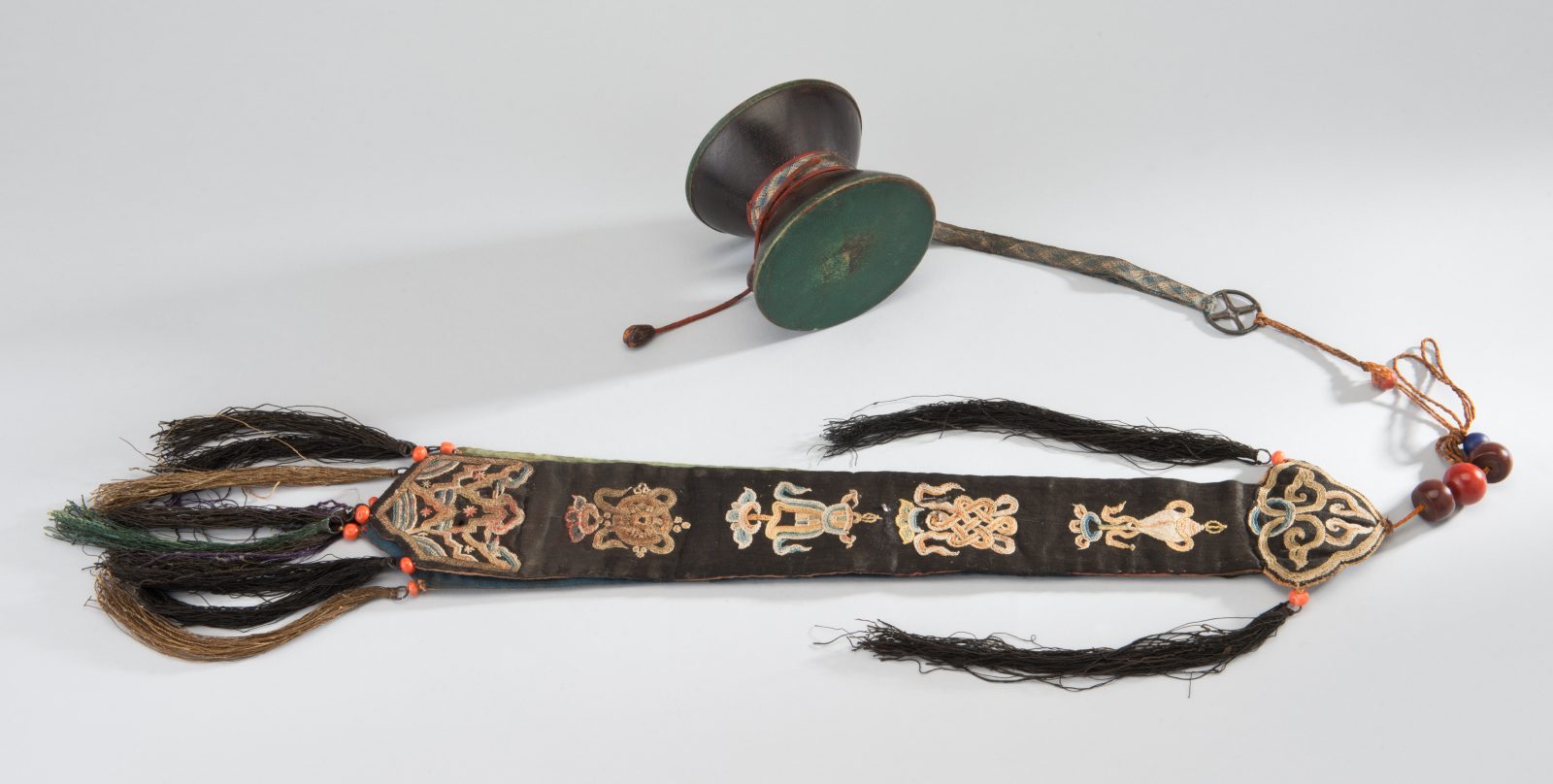Tibet
early 20th century
An implement used in tantric practices, the two halves of this drum symbolize the union of the two aspects of enlightenment. When paired with a bell, it represents the male aspect of enlightenment, and its drumming is the sound of the bliss of realizing the true nature of reality. Large hand drums are used in the Tibetan practice of “cutting the ego.” Their sound represents impermanence.
